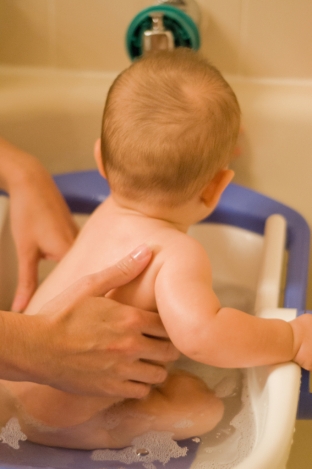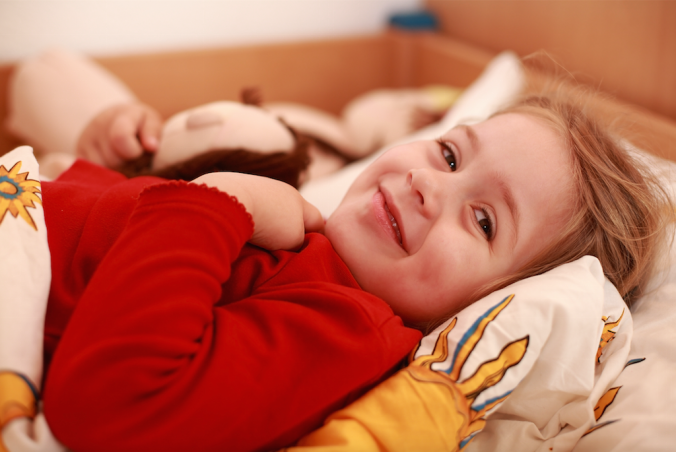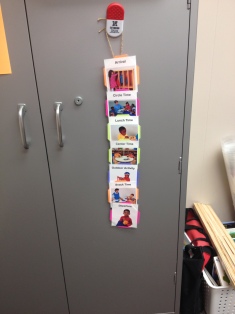 Why Are Routines Important?
Why Are Routines Important?
One of the most important concepts for parents and child care providers to consider is the child’s daily routine. A well thought out routine can be the secret to a calm, child centered learning environment if planned appropriately. Children desire to know what is coming next in their lives. If the established routine is consistent and predictable, the children in your care will begin to infer and make sense of “time” related to the events in the daily schedule. Perhaps morning snack always comes after story time, or Johnny’s Dad always arrives shortly after outdoor play. When a caregiver commits to establishing a consistent routine, they are building a sense of trust and children have a sense of control over the day.
On the other hand, if the daily routine is full of unknowns and interruptions, this chaotic environment will likely result in worry and anxiety in young children. Children who cannot yet communicate feelings around the disorganization may instead display disruptive behaviors toward the parent or caregiver and other children in the setting.
Routines In The Home
Parents and caregivers can work together to establish routines at home that are similar to child care and vise-versa. We all lead busy lives, and weekends and evenings can be even
more spontaneous. Parents will find that they have less struggles with their little ones if they can at least keep meals and bed time or nap time close to a normal routine. Don’t forget to communicate together about changes in your normal routine as well. Caregivers who are aware of this can be more sensitive to individual children’s needs.
Example On How To Keep Routine In The Home
Parents can make a simple flow chart of events as a visual for children at home similar to what you might find in a preschool classroom. This could be posted on the refrigerator and as the day goes on, the child could move a refrigerator magnet to the picture of what happens next. Eventually children won’t rely on moving the marker with each event, and will be satisfied with knowing that they have passed a few steps and can visually see what is next. These picture schedules are also great at preparing children for a change in the daily routine. Parents and caregivers can talk about how the routine will be different today with a simple explanation and perhaps rearrange the photos if needed to help the child see how they will go about the day. Check out these additional tips on establishing routines from eXtension.
Routine With Infants
For caregivers of infants and toddlers routines  are all about meeting the needs of the child in a responsive, nurturing way. We wouldn’t expect all infants to be fed, or nap at the same time, but the manner in which you respond and the environment you design to meet the infant’s needs can be seen as your established routine. For more information on establishing routines check out this article from NAEYC.
are all about meeting the needs of the child in a responsive, nurturing way. We wouldn’t expect all infants to be fed, or nap at the same time, but the manner in which you respond and the environment you design to meet the infant’s needs can be seen as your established routine. For more information on establishing routines check out this article from NAEYC.
Key Points When Setting Up Your Daily Routine
- Consider the age and developmental stage of the children when establishing routines.
- Consistency is important to build trust and reduce behaviors and anxiety.
- Parents and caregivers can work together to enhance the consistent and predictable routine.
- If there must be a change in the routine, try to prepare the child ahead of time.
- An established routine will allow you to be flexible when needed with minimal disruptions.
What are your tips for setting up routines in your child care center or home? Leave us a comment below!
Lynn DeVries, Extension Educator | The Learning Child
Make sure to follow The Learning Child on social media for more research-based early childhood education resources!



 Day after day we get up, get ready for work, drive to the office, work all day, go home and do it all over again tomorrow… Some adults do not like their routine life but if you are a toddler or preschooler, routines and schedules are one of the best things in the world!
Day after day we get up, get ready for work, drive to the office, work all day, go home and do it all over again tomorrow… Some adults do not like their routine life but if you are a toddler or preschooler, routines and schedules are one of the best things in the world! The terms routines and schedules are interchangeable. Schedules represent the big picture and routines represent the steps done to complete the schedule. For children, routines can influence a child’s emotional, cognitive and social development. Children feel safe and secure knowing what is going to happen next in their day. Schedules help them understand expectations and can actually reduce behavior problems along with having a higher rate of child engagement in activities.
The terms routines and schedules are interchangeable. Schedules represent the big picture and routines represent the steps done to complete the schedule. For children, routines can influence a child’s emotional, cognitive and social development. Children feel safe and secure knowing what is going to happen next in their day. Schedules help them understand expectations and can actually reduce behavior problems along with having a higher rate of child engagement in activities. Why Are Routines Important?
Why Are Routines Important?
 are all about meeting the needs of the child in a responsive, nurturing way. We wouldn’t expect all infants to be fed, or nap at the same time, but the manner in which you respond and the environment you design to meet the infant’s needs can be seen as your established routine. For more information on establishing routines check out
are all about meeting the needs of the child in a responsive, nurturing way. We wouldn’t expect all infants to be fed, or nap at the same time, but the manner in which you respond and the environment you design to meet the infant’s needs can be seen as your established routine. For more information on establishing routines check out